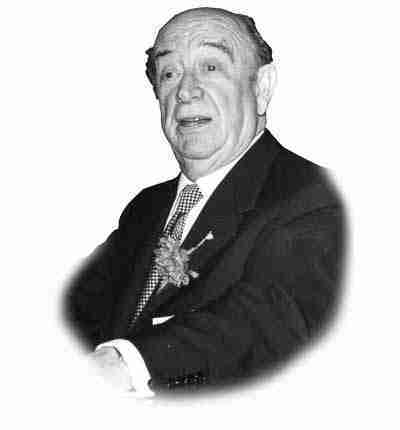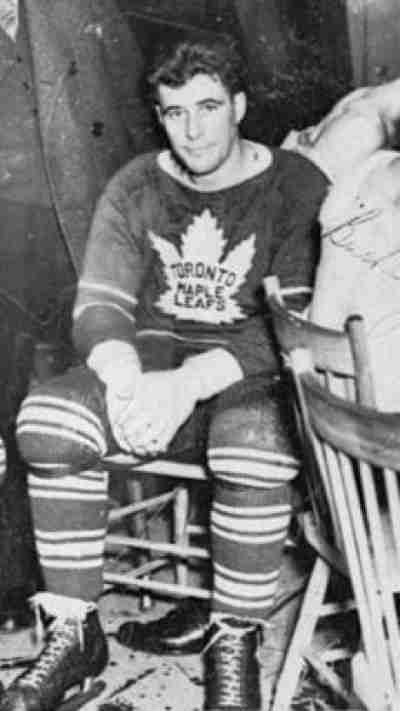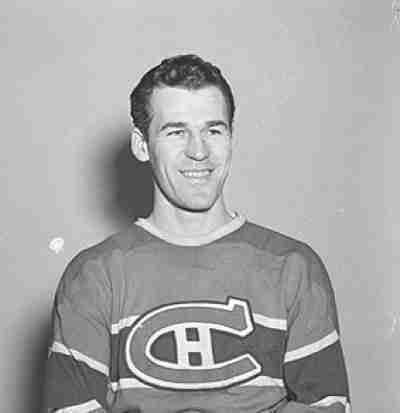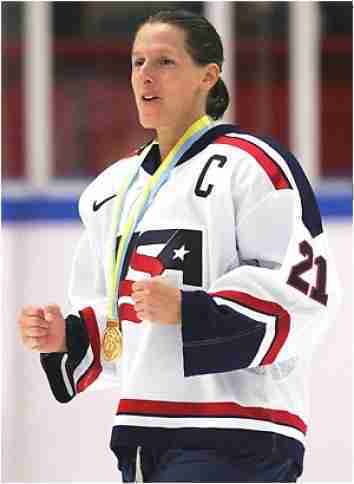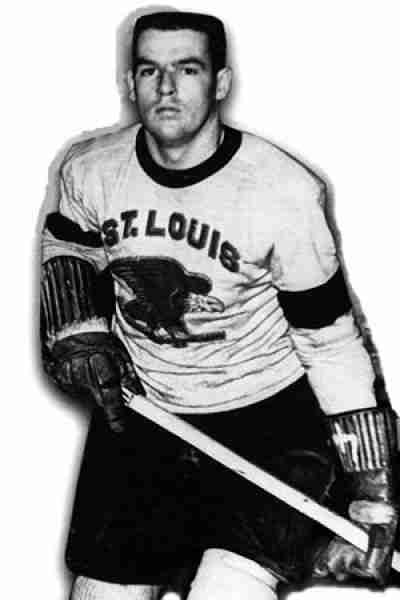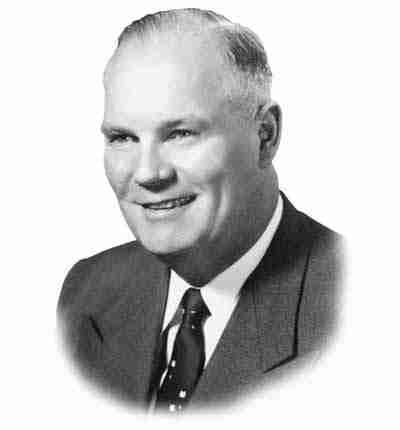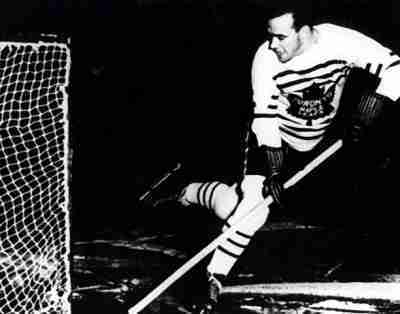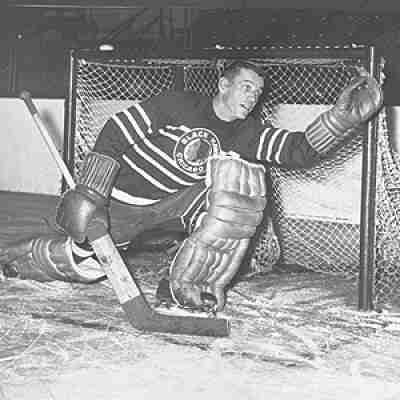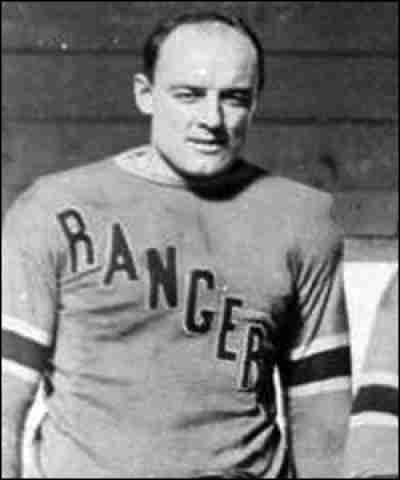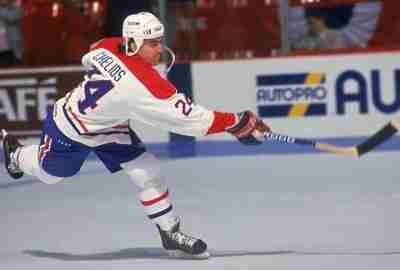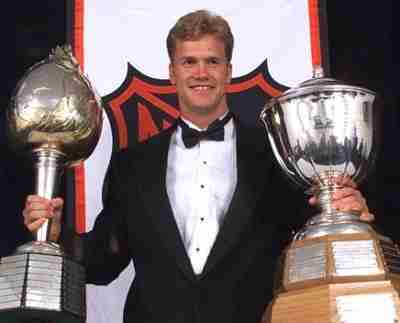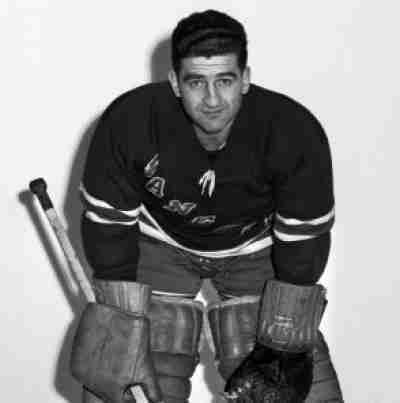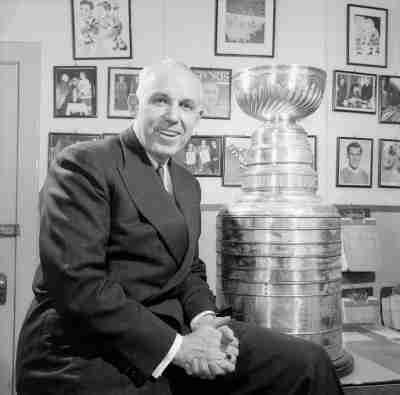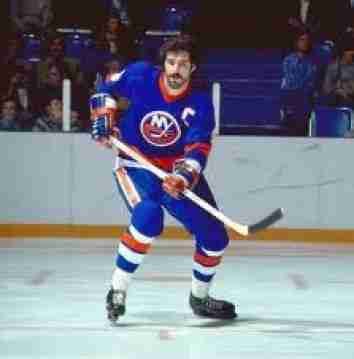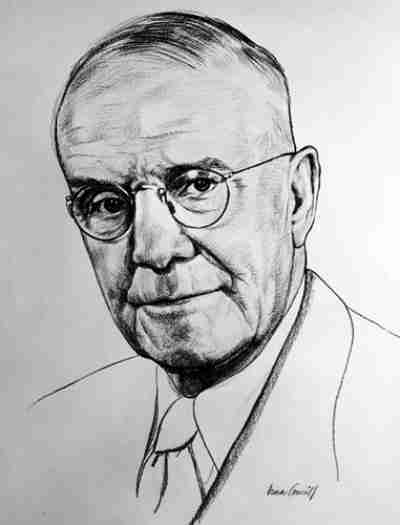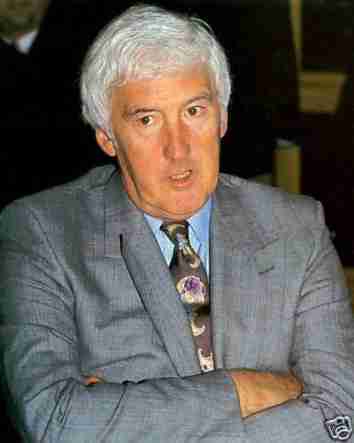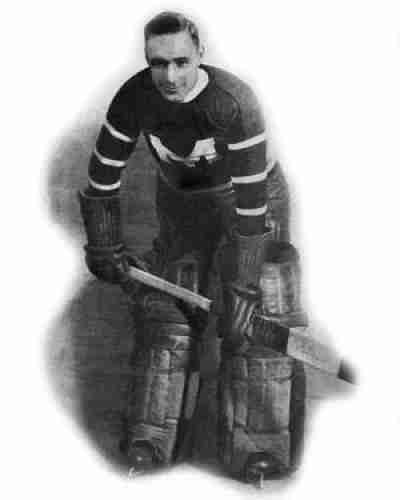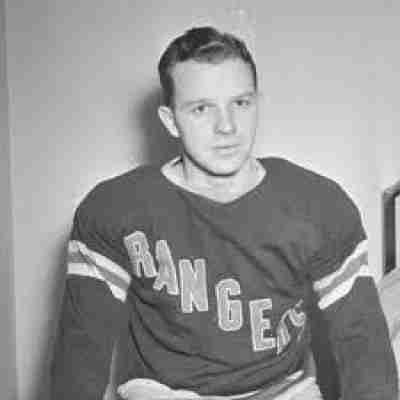Bunny Ahearne was born in Ireland, and spent most of his adult life in Great Britain; a strange pedigree for a Hockey Hall of Fame inductee. Ahearne worked for the British Ice Hockey Association (yes there is one) and managed the team that shockingly won the Olympic Gold over Canada in 1936. He would later serve in various capacities for the IIHF and was a big part in bringing Canada and the United States to become active members of the organization. This induction is great for showing the Hall wanted to truly honor the International aspect of the game, but this may not be the best overall choice to do so.
As part of the famed “Kid Line”, Harvey “Busher” Jackson would be part of the annual points chase for years, leading the league in the category in the 1931-32 season. Jackson used his excellent speed and offensive rushes to terrorize opponents, and in the year he won the scoring title, also led his team to the Stanley Cup.
Although Emile “Butch” Bouchard was mostly a stay-at-home Defenceman, his well timed and accurate passing skills were often the catalyst for the Montreal Canadians expert offensive rushes. Bouchard brought a strong physical presence to the Habs defense which the squad desperately needed. His bodychecks became legendary in the NHL, and despite his immense strength and physical play, he rarely got into fights. Bouchard would help Montreal win four Stanley Cups and was a First Team All Star three times. Perhaps more importantly, as Bouchard came into his own, he would often serve as a mentor to many of the younger players, making that much more valuable to the team dynamic. The Hall of Fame induction was a nice finishing touch for a good man with a great career.
One of the most popular players ever to put on a Boston Bruins uniform (and doesn’t that say something!) Cam Neely’s career was taken away far too soon. Neely fought countless injuries, which although is typical for hockey players was exasperated by his attacking style of play. He was a natural goal scorer who three times hit the 50 goal mark, most impressively in the 1993-94 season when he only played 49 games in another of his injury plagued campaigns. Neely would never play more than fifty games in a season after the age of 25, and by 31 his injuries forced him to retire. Although his career numbers from his era may not seem Hall of Fame worthy, he is a four time Second Team All Star selection which indicates his merit in Toronto.
Angela James justifiably was the first Canadian woman to enter the Hockey Hall of Fame and IIHF Hall of Fame. Cammi Granato entered at the same time in both Halls at James, and deserved to be the first American woman to do so.
Carl Voss played eight seasons in the National Hockey League, though his career on the ice was nothing that would be considered Hall of Fame Worthy.
The former owner of the Boston Bruins, Charles Adams truly respected the game of Hockey, much like the other great owners in the game’s early days. It is because of men like Adams that the sport grew, and indirectly the sport in New England. Some franchise owners do not belong in their respective Halls of Fame, but that can NOT be said of Charles Adams.
A decent amateur hockey player in his own right (he was an Allen Cup Finalist in 1921) Charles Hay entered the Hockey Hall of Fame as an honored builder. Hay helped to form Hockey Canada; which helped coordinate the best minds of hockey to help grow the Canadian team internationally. Hay would also help with the rough negotiations with the Soviet Union’s Hockey organization that brought the 1972 Summit Series to life, which is probably the biggest reason that he got elected to the Hall.
A five time goal scoring champion in the National Hockey League, Charlie Conacher was a star player for the Toronto Maple Leafs and was the Right Wing of their famed “Kid Line”. Conacher was aptly nicknamed “The Big Bomber” for his powerful shot that scared goaltenders for years. He was not a one trick pony, as he was an underrated skater who could also elude defenders with his stick handling ability. He would suffer a wrist injury in 1936 that though was not considered serious at the time, but caused him to miss major chunks of the next two seasons. Although Conacher would play for a few more years, chronic injuries prevented him from returning to the top ten in scoring and he was out pro hockey at the age of 30.
One of the greatest goaltenders of hockey’s early era, Charlie Gardiner’s greatness was curtailed at the age of 29 by a brain hemorrhage that took him away only weeks after his greatest triumph.
An inaugural member of the New York Rangers, Ivan “Ching” Johnson may not have been the best athlete in hockey (in fact he was far from it), but he mastered the art of defensive hockey with punishing body checks and slowing down offensive skaters with subtle clutching. Johnson was not paid to score (which is good, as he didn’t often) but his defensive acumen had few peers in his time and he was a four time post season All Star and two time cup winner for New York.
A rough and tumble defenceman, Chris Chelios did it all in the NHL. He won the Stanley Cup three times, won the Norris Trophy three times as the league’s top blueliner and was a post season All Star seven times. Chelios was easily the headliner for the Class of 2013 and one of the best ever American born players regardless of position.
Chris Pronger is a former Hart Trophy and Norris Trophy winner and would twice lead the National Hockey League in Plus/Minus while he was a member of the St. Louis Blues. Pronger would become a four time post-season All Star, a Stanley Cup Champion with the Anaheim Ducks and was a Olympic Gold Medalist with Canada.
Depending on whom you ask, the induction of Chuck Rayner to the Hockey Hall of Fame may be a bit of a curious one. Overall, Rayner’s career was not an extensive one (Interrupted by his service in World War II), but upon his return to the NHL, he did win the Hart Trophy and was a Second Team All Star three times. His other claim to fame, was that he one of the first “wandering” Goalies, as he would leave his net on a somewhat regular basis, in attempts to move the puck. Still, Hart Trophy and all, it is a little difficult to make a Hall of Fame case for an Original Six Goalie who never won a Stanley Cup.
Initially a referee in the National Hockey League (who was assigned to referee some very important games), Clarence Campbell was moved to the office and was groomed to be the heir apparent to take over the Presidency of the NHL. The plan was temporarily derailed as Campbell joined the Canadian military to serve in World War II (in which he rose from Private to Lt. Colonel) but he returned in 1946 to serve under Red Dutton as the Vice President. Dutton (who never really wanted to be the President) swiftly resigned, and Campbell took over the job.
We will openly question this Hall of Fame induction. Although we respect the career of Clark Gillies, his Hall resume looks a little weak. Granted he was a good part of four Stanley Cups with the New York Islanders, and he was on a star line with Mike Bossy and Bryan Trottier; however he was the third amigo on that line. Gillies was a decent scorer, and the rugged enforcer on the line, but at no time did he get 40 goals or 100 points in what was becoming an era where many players hit those levels.
A decent player in his youth, Claude Robinson’s induction to the Hockey Hall of Fame is essentially based on his groundwork of creating the Canadian Amateur Hockey Association. Robinson also coached the Canadian Team to Olympic Gold in 1932. Robinson was one of a long list of builders inducted in 1947, though it can be argued (and we will) that his induction may not equate to that of the other builders of that class.
Cliff Fletcher may have only won one Stanley Cup, but he brought a brilliant hockey mind to various clubs and brought them a lot closer to the dance than they would have had without him. Fletcher first arrived in the NHL with the St. Louis Blues as he worked his way from Scout to General Manager, and a lot of his work in the background helped the Blues become a contender and reach the Finals three times. Later, he took over the reins in Atlanta and helped to organize the move to Calgary, where they became a top team in the 1980’s, and he won his Stanley Cup in 1989.
The real answer to the trivia question of who was the first Goalie to wear a mask (he wore a leather mask for five games in the 1929-30 season), Clint Benedict was the man whose style caused the NHL to allow goaltenders to not have to remain standing. Benedict would often “accidentally” fall to his knees to stop a puck, so much so, that he was dubbed by rival fans in Toronto as “Praying Benny” due to the amount of time he was on his knees.
The fourth Veterans Category inductee is another that we are bit on the fence on. Clint Smith was a good player for the New York Rangers and helped them win the Stanley Cup in 1940. Smith was known for his playmaking and gentlemanly play winning the Lady Byng in 1939. Smith found his way to Chicago and was on a dream line with Bill Mosienko and Doug Bentley and led the NHL in assists in 1944 and won his second Lady Byng. Overall, Clint Smith had a very productive career, but we have to question whether it was a Hall of Fame one.


